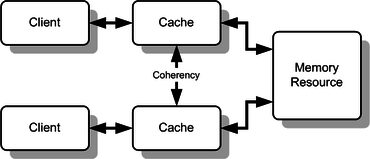GPU621/Group 1
Contents
Analyzing False Sharing
Team Members
Introduction : What is False Sharing?
Multicore programming is important to take advantage of the hardware's power as multicore processors are more common than ever. This is because it enables us to run our code on various CPU cores. But in order to effectively utilise it, it is crucial to know and comprehend the underlying hardware. The cache is one of the most crucial system tools. The majority of designs also have shared cache lines. And for this reason, false sharing in multicore/multithreaded tasks is a well-known issue. What is cache line ping-ponging, also known as false sharing? When multiple threads exchange data, one of the sharing patterns that has an impact on performance is false sharing. It occurs when at least two threads alter or use data that is in near proximity to one another in memory.
When multiple threads exchange data, one of the sharing patterns that has an impact on performance is false sharing. When at least two threads change or use data that just so happens to be nearby in memory and ends up in the same cache line, it causes this problem. False sharing happens when they frequently change their individual data in such a way that the cache line switches back and forth between the caches of two different threads.
Cache Consistency
Cache consistency refers to the synchronization of data between different caches in a computer system, ensuring that all caches have the most up-to-date version of data. In a multi-core processor or a distributed computing system, multiple processors may have their own local caches that store a copy of the data that is being used by the processor.
Each processor in a Symmetric Multiprocessor (SMP)system has a local cache. The local cache is a smaller, faster memory that stores data copies from frequently accessed main memory locations. Cache lines are closer to the CPU than main memory and are designed to improve memory access efficiency. In a shared memory multiprocessor system with a separate cache memory for each processor, shared data can have multiple copies: one in main memory and one in the local cache of each processor that requested it. When one of the data copies is modified, the other copies must also be modified. Cache coherence is the discipline that ensures that changes in the values of shared operands (data) are propagated in a timely manner throughout the system. Multiprocessor-capable Intel processors use the MESI (Modified/Exclusive/Shared/Invalid) protocol to ensure data consistency across multiple caches.
Cache consistency is important because without it, different processors may have different versions of the same data, which can lead to data inconsistencies and errors in the system. Different cache consistency protocols, such as MESI and MOESI, are used to maintain cache consistency in modern computer systems. These protocols define a set of rules and states for cache coherence and ensure that all caches in the system have the same view of the shared memory.
The MESI protocol
One of the most widely used cache coherence algorithms is the MESI protocol.
MESI (short for Modified, Exclusive, Shared, Invalid) consists of 4 states.
Modified - The only cached duplicate is the modified, distinct from main memory cache line.
Exclusive - The modified, separate from main memory cache line is the only cached copy.
Shared - identical to main memory, but there might be duplicates in other caches.
Invalid - Line data is not valid.
Sources
https://learn.microsoft.com/en-us/archive/msdn-magazine/2008/october/net-matters-false-sharing
http://www.nic.uoregon.edu/~khuck/ts/acumem-report/manual_html/multithreading_problems.html
https://levelup.gitconnected.com/false-sharing-the-lesser-known-performance-killer-bbb6c1354f07
https://www.easytechjunkie.com/what-is-false-sharing.htm
https://en.wikipedia.org/wiki/Cache_coherence
https://www.sciencedirect.com/topics/computer-science/cache-consistency
